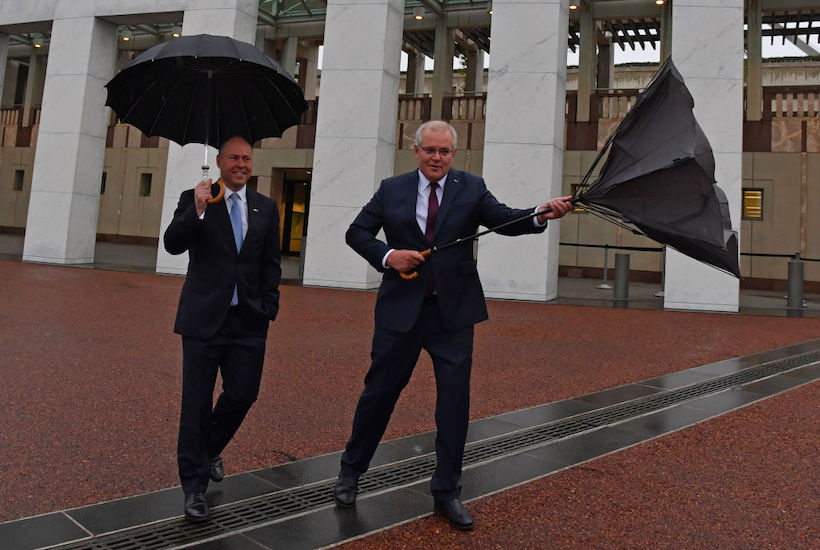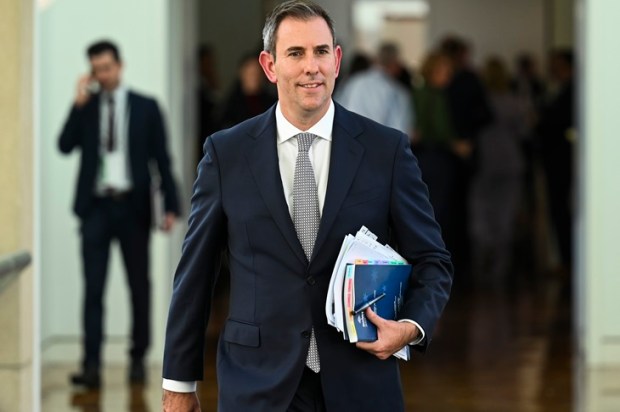Even before the Wuhan coronavirus spread into Australia and derailed almost 30 years of “uninterrupted economic growth”, there was a growing sense that the Australian economy was failing to deliver rising living standards for ordinary Australians.
Despite all the ‘miracle economy’ hype, real wage and household income growth had stagnated, even though the cost of essential goods continued to climb. Australia’s real per capita GDP growth was underperforming all the major developed economies. IMF forecasts for 2020 placed Australia firmly at the bottom of the pack in terms of GDP growth per head, below even Japan and Italy –- countries regularly pilloried as perennial economic underachievers.
The Australian economy may still have been growing in aggregate terms but many Australian households were facing recessionary conditions long before anybody had heard of COVID-19.
The ‘just-add-people’ economic model championed by Treasury allowed successive federal governments to cheat their way to higher GDP growth. Before COVID hit, Australia was adding an extra million people to its population approximately every 2.5 years. Yet, while stuffing more people into the production process via a massive expansion in immigration made the overall economic pie bigger, the slices weren’t getting any larger for individual Australians.
A new approach was needed. Now, as the country emerges from the coronavirus pandemic, the Morrison government has a unique opportunity to hit the reset button and jettison failed economic policies of the pre-COVID era. Unfortunately, Treasurer Josh Frydenberg risks letting a good crisis go to waste.
The Treasurer has signalled that he wants a return to high immigration as soon as possible. The latest federal budget, handed down on Tuesday, ‘forecasts’ that net overseas migration (NOM) will go into reverse due to the pandemic before roaring back to over 200,000 by 2023-24. In reality, they should be viewed as targets rather than mere forecasts.
Former prime-ministerial chief of staff Peta Credlin has dubbed Treasury officials “the original ‘Big Australia’ zealots.” According to Credlin: “To the Treasury boffins, more people means a larger economy and more tax revenue for the Feds, and it’s then up to the states to build the roads, schools, hospitals and housing to cope, or not cope, as congestion in our big cities shows.”
Restarting the giant immigration Ponzi scheme would re-intensify pressure on infrastructure, affordable housing, community amenity, natural resources and the environment, and social cohesion. It would likely kill any prospect of meaningful productivity and wage growth in the post-COVID era. It would also add to higher unemployment and under-employment.
Without a rapidly-ballooning population, huge amounts of money could be diverted from expanding infrastructure and services to investment in the sort of ‘capital deepening’ that is desperately needed to boost productivity.
A report released late last year by the Australian Population Research Institute warned that Australia had become “stuck on a low productivity pathway” due to its heavy reliance on continual population increases to stoke GDP growth. This strategy, the authors concluded, would result in “the addition of an ever-larger, relatively unproductive, domestic burden on to Australia’s narrow commodity-based international economy.” A poorer, far more crowded Australia beckons.
Rather than pump up immigration numbers again, Canberra should accept a permanent population slowdown and allow our economy to transition towards productivity and export-driven growth. Frydenberg should not be afraid of reform.
Got something to add? Join the discussion and comment below.
Get 10 issues for just $10
Subscribe to The Spectator Australia today for the next 10 magazine issues, plus full online access, for just $10.


























Comments
Don't miss out
Join the conversation with other Spectator Australia readers. Subscribe to leave a comment.
SUBSCRIBEAlready a subscriber? Log in